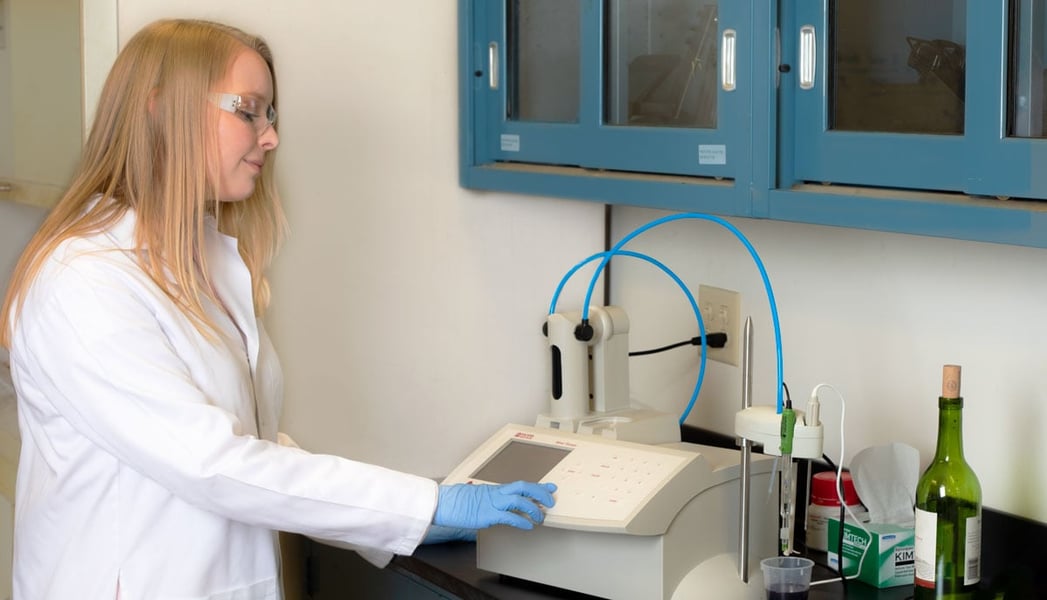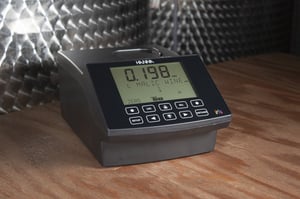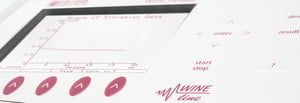
If you’ve been around the wine industry for any length of time, you’ve heard some of the common cliché phrases the industry jokes about, such as, “it takes a lot of beer to make great wine.” One that has some painful base in reality given the ultra-competitive nature of the wine market as a consumer good, its capital-intensive costs up-front, and its generally slow rate of return on those capital investments, is the phrase, “If you want to make a small fortune in the wine industry, start with a large one.”
Budgets are tight, options become limited, and the low-cost method is often the one given the nod, even if it’s not the right solution for the need or problem.
We wanted to address the topic for the average winemaker when it comes to their winery lab, as a little bit of business finance understanding can go a long way in acquiring the right option for your testing needs, without putting a strain on the all important bottom-line of your winery’s cash operations.
Capital Purchases vs. Consumables
The first distinction that needs to be made when it comes to purchasing in the wine lab is whether those purchases are regular, recurring consumables, such as calibration buffers, testing reagents, or other routine items which have frequent turnover in wine analysis; or if an item is a larger, costlier, one-time purchase that outfits your winery lab with a dedicated piece of equipment or hardware.
Regular turnover or lower cost items are classified as operating expenses and are best handled by allocating a monthly or quarterly budget to your wine lab for those routine costs. Simply estimate the number of samples you run for your common tests over the time period of the budget, figure the cost per sample in terms of its testing needs, and the multiple of the two becomes your operating budget line item for routine testing supplies.
Larger investments into equipment and instrumentation require a different strategy though. These are the capital budget items, and require some planning.
The Right Wine Analysis Tool for the Right Wine Analysis Job
When it comes to capital investments in equipment, ask yourself what is your greatest need? Do you have a need to improve precision and accuracy in your wine testing? Is it a time savings you’re after because your current method is too slow and cumbersome? Is it an increase in sample throughput perhaps as you’ve grown your capacity and simply have more wine to test?
While suppliers may offer a range of options for any given test, there is generally one best suited to meeting your greatest need. Don’t purchase a cheaper unit that is intended as a base model for limited sample demands if an increase in throughput is your greatest need for instance. The tool won’t do the job you want, you’ll be unhappy with the purchase, and will still have the initial pain point that your purchase failed to address as you went with the lowest cost item versus the one best suited for your need.
The CapEx Wine Lab Budget
Once you’ve identified a pain point for your winery lab that requires a larger investment, it’s best to look at your budget from a cash flow perspective versus a need/allocation basis as you do operating expenses. Larger, single expense layouts are often prohibitive in budget terms, especially for smaller wineries with limited investment capital. The ideal solution becomes using someone else’s money to make the purchase.
While there’s a bit of tongue-in-cheek to that answer, it’s one with a long history in the capital world. A planned small business loan is generally the ideal route for many wineries to acquire the larger investment items needed for optimizing testing and improving quality control through the wine lab. The extended time period that financing offers in payment, paired with a low interest rate on a business loan, can allow for minimal impact on a winery’s monthly cash flow in operations, while satisfying the company’s capital investment needs for equipment.Cash Flow for the Wine Lab
Let’s say the ideal piece of lab equipment to suite your needs comes at a $3,000 cost. A one-time layout of that expense can hit an operating budget of $150 per month pretty hard. However, if you divide that number over 12 months it becomes a monthly increase of $250 over the year. This of course does not account for interest payments. If you can finance at 5% per year, that makes the cost of the loan $3,082 and the monthly increase becomes $257. Spread that financing over 24 months and those numbers change to $3,159 for the cost of the loan and a monthly increase of only $132.
Both options are still a significant increase from a low operating budget, but let’s start to look at things from a cash flow perspective. Let’s say your annual production is 10,000 cases. That’s 120,000 bottles of wine assuming a standard 750mL case format. If you sell that full production each year at an average of $25 per bottle, you generate a revenue of $3,000,000. To acquire the extra revenue needed to cover the cost of your capital investment into this shiny new piece of lab equipment you need an increase in the price of your wines by 2.6¢ per bottle if you financed over 2 years, or 2.57¢ over the single year. That cash flow number suddenly doesn’t sound so daunting if you have a strong sales pipeline.
There’s another wrinkle however, we haven’t paid Uncle Sam his cut yet. Let’s subtract 40% of our $3,000,000 in revenue to pay the government, so your after-tax revenue is $1,800,000. This is the real meat of where your operating expenses come from. In order to generate the additional $3,082 required to finance our new lab equipment over 1 year, we need to increase the average cost of our wine by a whopping 4.28¢ per bottle togenerate sufficient pre-tax revenue to give us $1,803,082 in after-tax dollars to cover our added cost. Still a rather insignificant number at an average price point of $25.
Let’s take one last view from a different direction. Say you really don’t want to raise your prices, but would prefer instead to add to existing sales to cover this difference. To generate $3,082 in pre-tax revenue to cover the cost of a small business loan financed over 1 year with an average price of $25 per bottle, you have to increase your annual sales by 124 bottles of wine. Just slightly more than 10 additional cases in sales over the year. Less than 1 case of additional wine sales per month. That’s roughly the cost demand of a $3,000 lab investment for a 10,000-case production winery with an average price of $25 per bottle in terms of cash flow perspective.
Capital Investment Equipment from Hanna Instruments for the Wine Lab
Hopefully with a better understanding of the costs for capital investment purchasing, wineries can better make decisions as to the ideal investments into winery lab analysis. Especially since proper lab protocols can drive improved wine quality, leading to better customer and critical reception of your wines, and in the end boost wine sales.
Two offerings fromHanna Instruments are ideal in considering the CapEx budget plan for your wine lab needs. The first is our HI901W wine titrator, which can open up the full range of wine titration analysis for your winery lab.

The second is our HI801 iris spectrophotometer which empowers users with all the common enzymatic-based testing for wine analysis:
Financing your wine lab doesn't have to be a struggle!
Being in contact with Hanna Instruments can help you find the right testing equipment to meet your wine making needs. Contact us below!
That's why we've dedicated our blog as a helpful resource for you to use! Catch up on the latest products, explore industry trends, discover testing tips, learn how to improve results, and more. Got questions? Email sales@hannainst.com.


